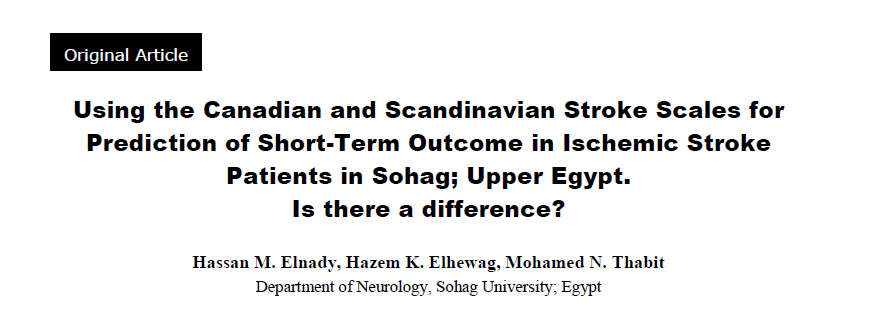Abstract
Background: Among stroke scales we considered the Canadian Stroke Scale (CSS) and Scandinavian Stroke Scale (SSS) as the most suitable and most simple to be applied on our population for further generalization on other community hospitals. Objective: We aimed to determine which one of the two scales has the best predictive power of outcome. Subjects and Methods: Equally trained observers scored consecutive admissions to Neurology Department of Sohag University Hospital on CSS and SSS. Outcome at 3 months using the modified Rankin Score (mRS) was categorized as good (mRS ≤ 2) or poor (mRS > 2). Predictive accuracy of the variables was compared by receiver operating characteristic curves. Results The follow up data was completed in 203 patients. Altogether 162 patients found to be alert or drowsy (60 males and 102 females) are included in the study. The two stroke rating scales each predicted 3-month outcome with an accuracy of 0.78 or greater. The diagnostic cutoff level with the optimum sensitivity and specificity was found to be >7 for the CSS, with 72.5% sensitivity, 74.4% negative predictive value, 78.0% specificity, and 76.3% positive predictive value. For the SSS the optimum diagnostic cutoff level was found to be >38, with 77.5% sensitivity, 76.3% negative predictive value, 70.7% specificity, and 72.1% positive predictive value. Conclusion: We demonstrated that both the CSS and SSS are useful in the evaluation of patients with stroke and both equally predict 3-month outcome. Baseline assessments only need to include either of them.


